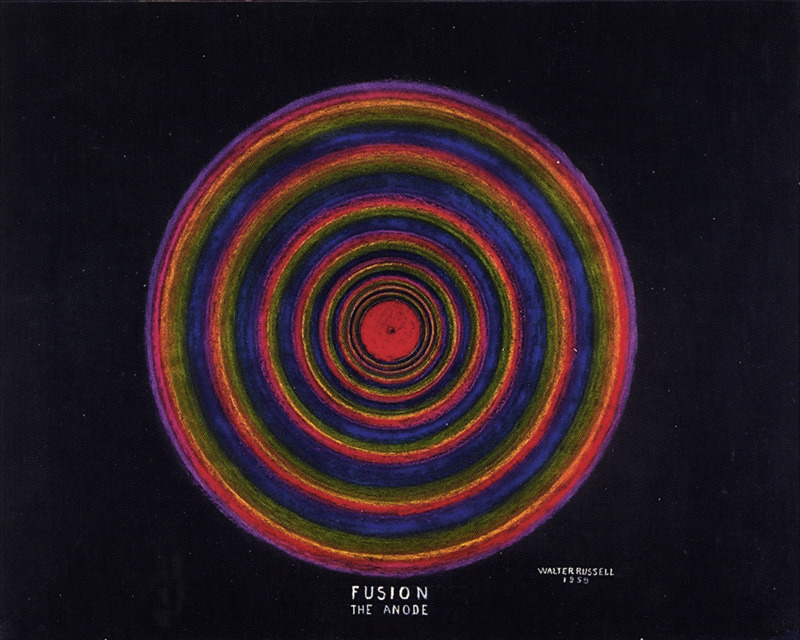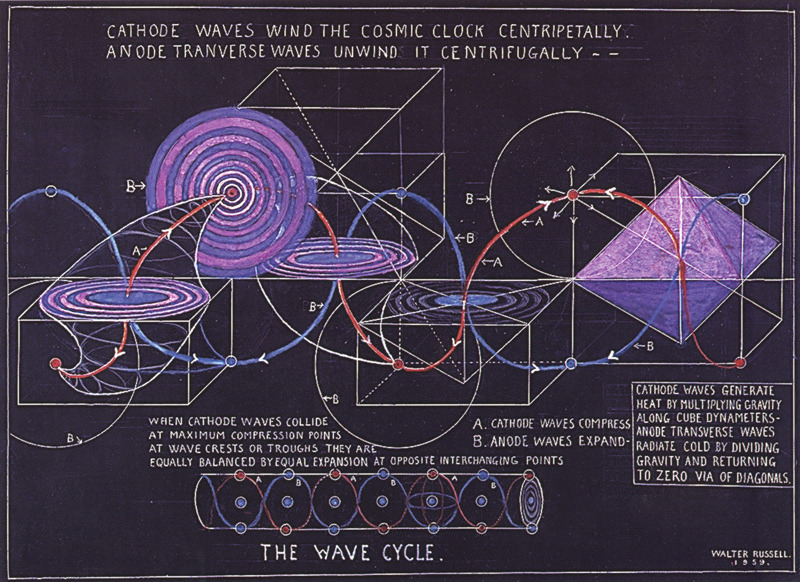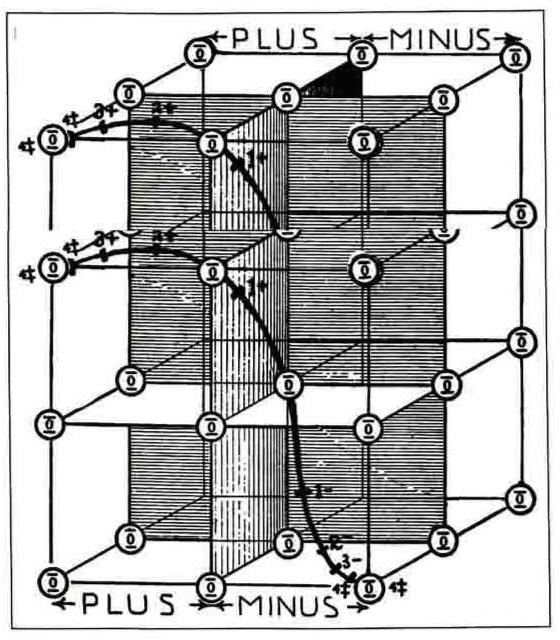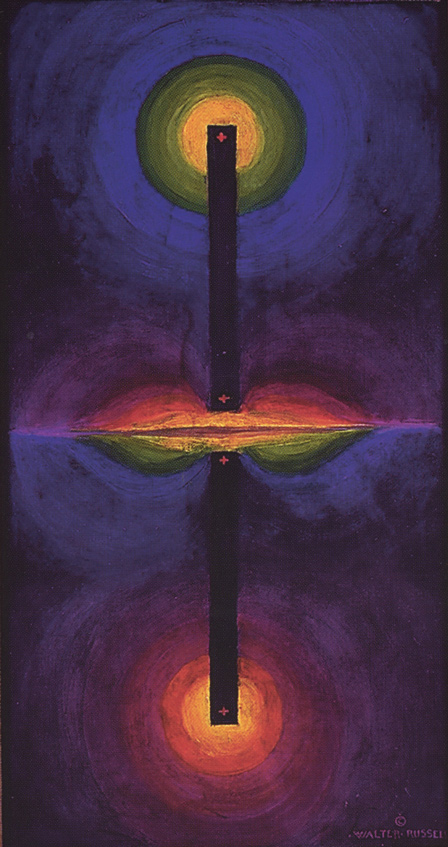【2022 Archives】
022 ArchivesSecret of Light
Look

Walter Russell (May 19, 1871–May 19, 1963) was the progenitor of a “new world-thought” centered on light; in books such as The Electrifying Power of Man-Woman Balance, The Book of Early Whisperings, andThe Dawn of a New Day in Human Relations, he foresaw “a marriage between religion and science” in which the laws of physics would be rewritten. He believed that weight “should be measured dually as temperature is,” with “an above and below zero,” and that “the sunlight we feel upon our bodies is not actual light from the sun.” (Russell’s Wikipedia entry notes gingerly that his ideology “has not been accepted by mainstream scientists.”)
In what’s ostensibly his seminal text, The Secret of Light, he outlines a philosophy rife with capitalized Nouns and portentous pseudo erudition:
Man lives in a bewildering complex world of EFFECT of which he knows not the CAUSE. Because of its seemingly infinite multiplicity and complexity, he fails to vision the simple underlying principle of Balance in all things. He, therefore, complexes Truth until its many angles, sides and facets have lost balance with each other and with him.
Truth is simple. Balance is simple. Rhythmic balanced interchange between all pairs of opposite expressions in Natural phenomena, and in human relations, is the consummate art of God’s universe of Light. It is also the Law. In this one fundamental Universal Law lies the balanced continuity of all creative expression in God’s electric wave universe of two conditioned lights in THE ETERNAL QUESTION seeming motion which record God’s One Whole Idea of Creation into countless seemingly separate parts of that Whole Idea.
He mastered the casual authority of the simple declarative sentence. A personal favorite: “Two-way sex-conditioned spirals are the consummate individuals of all Creation.”
To illustrate these hypotheses, Russell relied on diagrams that are as visually compelling as they are inscrutable. “All matter is created by dividing gravity into pairs,” he wrote in one. Another charts the location of every element along a “nine-octave cycle.”
You can see more of his diagrams here.






Dan Piepenbring is the web editor of The Paris Review.
Search
Categories
Latest Posts
Shop the Google Pixel Pro 9 for $200 off at Amazon
2025-06-26 09:30The Clarity of Violence by Rosie Price
2025-06-26 09:11Six Young Women and Their Book Collections by The Paris Review
2025-06-26 09:10Séance Sights by The Paris Review
2025-06-26 09:04Meta continues its submission to Trump with new advisor on its board
2025-06-26 08:58Popular Posts
The State of PC Gaming in 2016
2025-06-26 09:51Harold Bloom, 1930–2019 by The Paris Review
2025-06-26 09:43The Uncanny Child by Elisa Gabbert
2025-06-26 08:22Just Enjoy Every Fucking Blessed Breath by Rob Tannenbaum
2025-06-26 07:43Sony launches new flagship XM6 headphones: Order them now
2025-06-26 07:36Featured Posts
Best vacuum mop combo deal: Save $140 on the Tineco Floor One S5
2025-06-26 09:42The Interior Decorators of Bloomsbury by Emma Garman
2025-06-26 09:24Poetry Rx: The Fucking Reticence by Kaveh Akbar
2025-06-26 08:17The Nobel Prize Was Made for Olga Tokarczuk by Jennifer Croft
2025-06-26 08:00Skype is finally shutting down
2025-06-26 07:15Popular Articles
Inside the Murky Process of Getting Games on Steam
2025-06-26 09:43The Clarity of Violence by Rosie Price
2025-06-26 09:07For Whom Is the Water Park Fun? by Barrett Swanson
2025-06-26 08:02Newsletter
Subscribe to our newsletter for the latest updates.
Comments (4757)
Style Information Network
The Mismeasure of Media
2025-06-26 09:41Ignition Information Network
A Polyphonic Novel of Midcentury San Francisco by Jessica Hagedorn
2025-06-26 08:41Wisdom Convergence Information Network
The Joys of the Italian Short Story by Jhumpa Lahiri
2025-06-26 08:19Transmission Information Network
For Whom Is the Water Park Fun? by Barrett Swanson
2025-06-26 07:54Charm Information Network
Skype is finally shutting down
2025-06-26 07:18